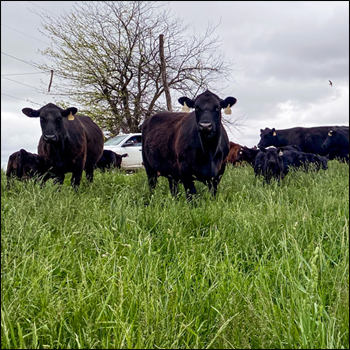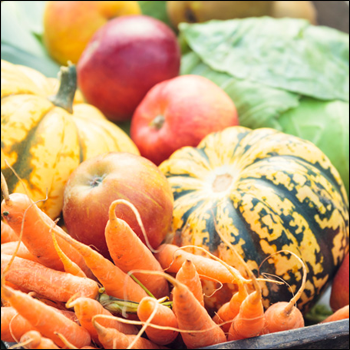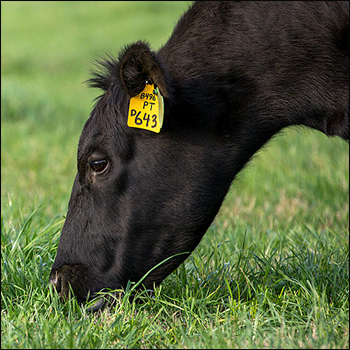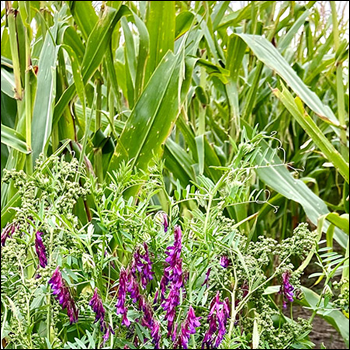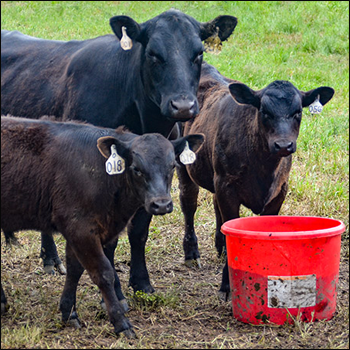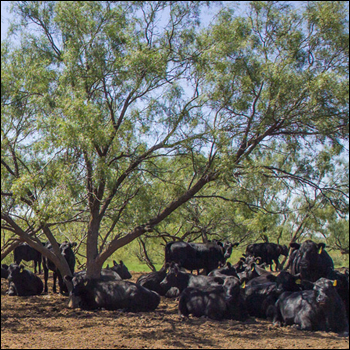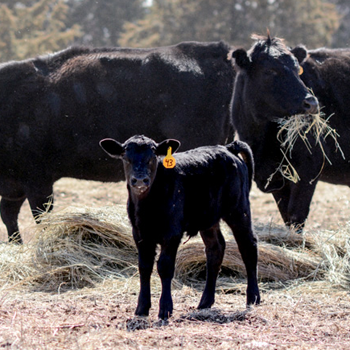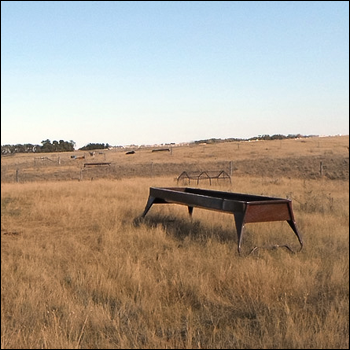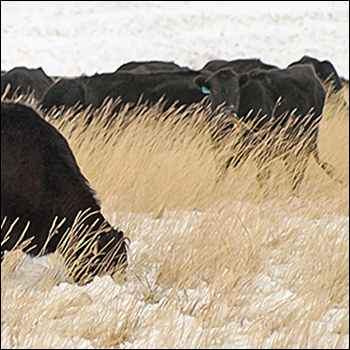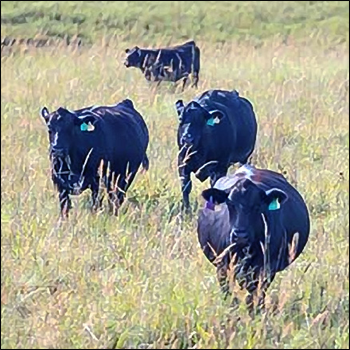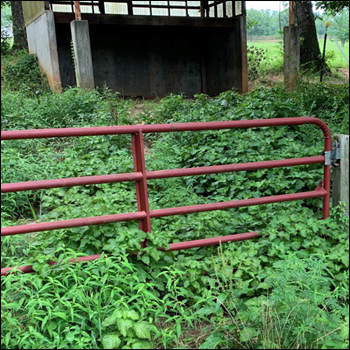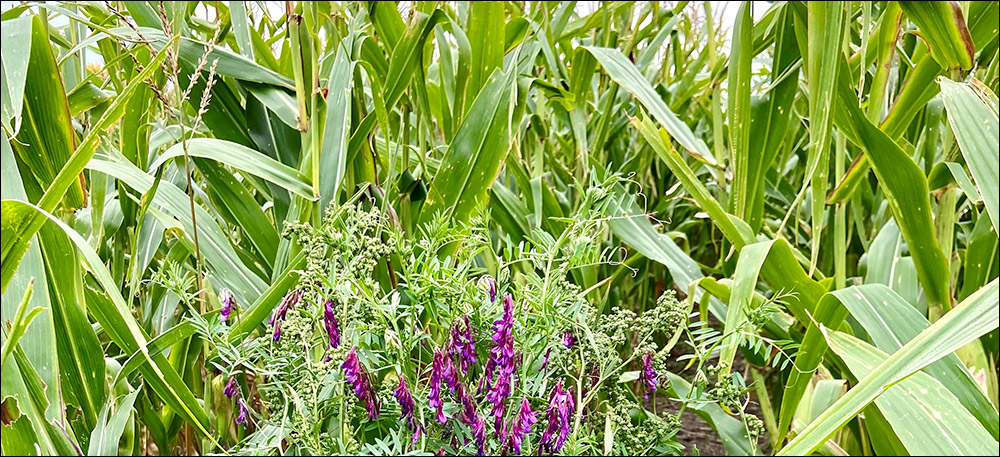
Innovative Cover Crops for Grazing
Interseeding corn with other forages may provide a more complete winter feed source for dry cows.
Cover crops were traditionally planted between other crops rather than leaving the field fallow; having roots in the ground reduces erosion from wind and water, holds soil moisture, and improves soil health. The cover crop would then be plowed under to add more organic matter and fertility before planting the next cash crop. In recent years, however, many stockmen are utilizing cover crops to provide more forage for livestock.
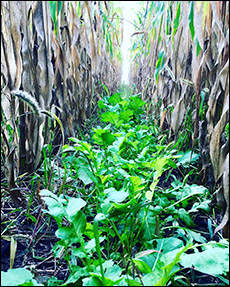 |
Researchers hope to find optimum management practices associated with growing and grazing interseeded corn crops. |
Emma McGeough, associate professor in the Department of Animal Science, University of Manitoba, says using cover crops for high-quality livestock forage is of significant interest and an exciting area of research.
Various types of cover crops make good forage, but producers need to keep in mind that cattle need a balanced diet. There is also a learning curve to determine what might work best for their own operation and goals, when to plant, and when to graze, and how to avoid overfeeding certain nutrients. Some producers do intercropping — planting a cover crop along with their main crop — to have something growing for forage after the main crop is harvested. Monitoring stage of maturity and nutritive value of an annual or mix of annuals is also important, and monitoring things like nitrates is critical.
Cover crops and blends can be used in many different ways, depending on when they are grazed. Some people want the extra forage for late summer or maybe just for fall/winter grazing. Every region is a little different in climate and conditions; what might work well in one region might not work as well in another. It might be interseeded with a cash crop or planted right after they harvest a cash crop, to obtain more grazing days in fall and winter. Some types of cover crops are best strip-grazed — limiting the cattle to small portions of the field at a time.
Some producers are experimenting with interseeding other plants in cornfields, which works well for classes of cattle that need more protein.
“Corn is high in energy, but low in protein,” said McGeough. “For mature, dry beef cows, low protein isn’t an issue, but when weather gets cold, their nutrient needs increase. Intercropping corn can potentially meet these nutrient demands and maintain high levels of productivity in late fall/early winter.”
McGeough is using test plots in cornfields to determine the best management practices for growing the crop, as well as for grazing it, she said. These trials are looking at timing of planting and corn row spacing. In the United States several researchers are looking at wide-row corn grown on 60-inch rows.
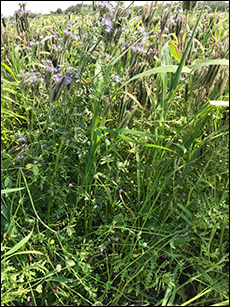 |
Cover crops can extend the grazing season after the cash crop has been harvested. |
The Manitoba researchers are also planning a large-scale grazing trial — with cattle on several different treatments.
“We want to look at this in terms of profitability and competitiveness. This is what drives the decision for most producers in terms of what they want to grow for their cattle,” McGeough explains.
Some of the things to be measured include forage quality, animal performance, feed intake, rumen energetic efficiency and nitrogen status of the animal.
“Weight gain is one of the most important things, so we’ll evaluate many of the contributing factors to identify the most promising intercropped treatments,” she said.
Another benefit of utilizing corn is that it can serve as a windbreak and help keep cattle grazing on windy days.
Producers who graze corn generally strip-graze, moving electric fence. This helps limit overeating on the ears; cattle can’t go through the whole field selecting just the ears. Strip-grazing reduces the risk for acidosis.
“Some people who graze corn provide supplemental protein, but this project will hopefully reduce that need because we are growing protein between the rows,” said McGeough. “This is why the economic analysis is important. It will give us actual costs associated with this type of grazing, which we can compare to more traditional methods of winter feeding,” she said.
Editor’s note: Heather Smith Thomas is a freelance writer and cattlewoman from Salmon, Idaho. Photos by Emma McGeough and Kevin Elmy.

Angus Proud
In this Angus Proud series, Editorial Intern Jessica Wesson provides insights into how producers across the country use Angus genetics in their respective environments.
 Angus Proud: Scott Sproul
Angus Proud: Scott Sproul
Oklahoma operation learned wisdom of moving calving season to better suit their marketing needs.
 Angus Proud: Bubba Crosby
Angus Proud: Bubba Crosby
Fall-calving Georgia herd uses quality and co-ops to market calves.
 Angus Proud: Jim Moore
Angus Proud: Jim Moore
Arkansas operation retains ownership through feeding and values carcass data.
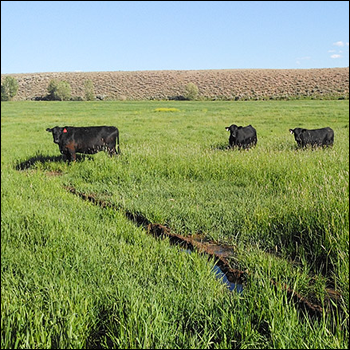 Angus Proud: Stephen Shiner
Angus Proud: Stephen Shiner
Idaho operation rotates pastures in summer and raises crops for winter.
 Angus Proud: Les Shaw
Angus Proud: Les Shaw
South Dakota operation manages winter with preparation and bull selection.
 Angus Proud: Jeremy Stevens
Angus Proud: Jeremy Stevens
Nebraska operation is self-sufficient for feedstuffs despite sandy soil.
 Angus Proud: Dave Rutan
Angus Proud: Dave Rutan
Angus breeder gets the most out of his bull investment by partnering with opposite calving-season operation.
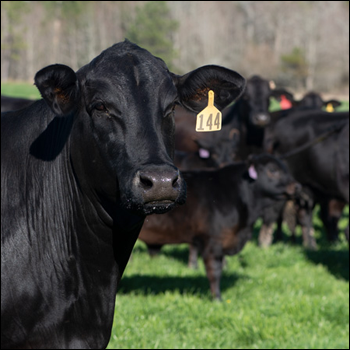 Angus Proud: Nickey Smith
Angus Proud: Nickey Smith
AngusLink helps Louisiana cattleman gain more for his calves.
